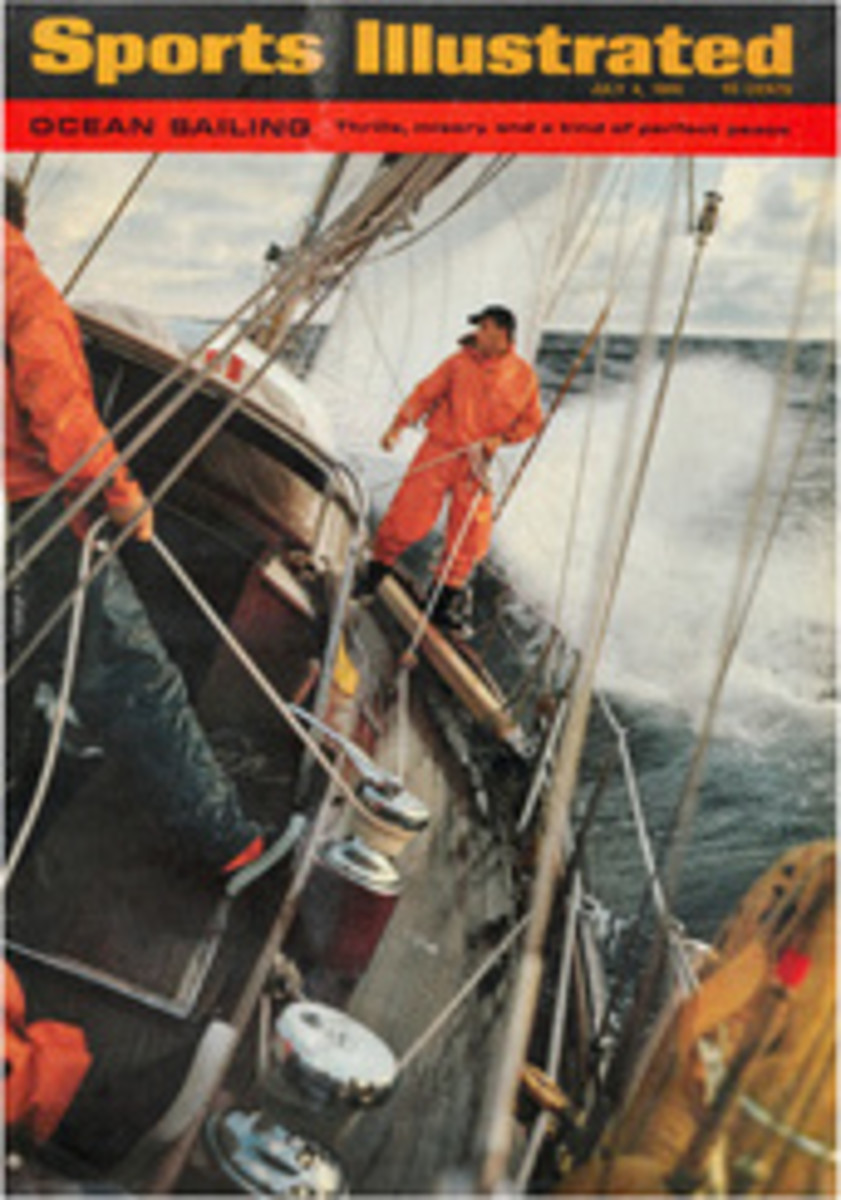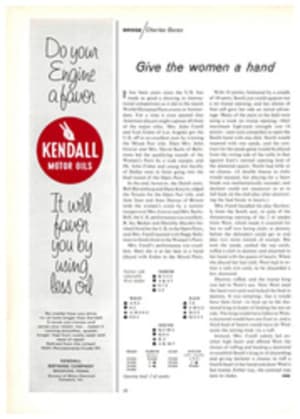
Ratfink Days in Merrie England
Well, gents, I'm glad to see you look so comfortable." Jemmy Shaw, owner of the Queen's Head, just off London's Haymarket, grinned at the mixed crowd of a couple hundred dock-hands and dandies, toffs and tradesmen, who jostled shoulder to shoulder around the six-foot-wide enclosure in the middle of the room. It was during the 1840s, and the men had gathered for an evening of rat-baiting.
Around the room were bulldogs with tight round heads like clenched boxing gloves and bandy legs showing the desirable pear-shaped space between grasshopperlike thighs and toy terriers weighing only three or four pounds apiece. There were Maltese dogs, and other less determinate breeds and mixtures, black, tan, white or brindled, straining against their spiked collars, almost wrenching the leads from their owners' hands. One yipped and stood on hind legs in an effort to see into the pit. Conversation became impossible as a couple of dozen miscellaneous hounds took up the cry.
Shaw shouted authoritatively for silence. "You that 'ave dogs, do make 'em shut up." There were slaps and curses, and the noise dropped again. But soon a man walked into the room carrying a great wire cage; and when the dogs saw it, they yelped twice as loud, for the cage contained two score of writhing brown rats.
A well-dressed man called the captain climbed over the edge of the pit, opened the door of the cage and pulled out a dozen of the strongest rats by their tails. "Chuck him in," he cried, and the mass of rodents were joined by a small but lively terrier. The dog was a beginner and unsure of what was expected of him. He advanced nervously toward a group of rats, which sprang up at his face. One took a peck at the dog's lip, hung on for a second and let go. The infuriated terrier pounced forward, took the rat instinctively by the back of the neck, gave it a quick twist and a shake and dropped the corpse smartly, then looked up, as if wondering what to do next. The dog's handler beat hard on the wooden sides of the pit with his hand: "Hi! Hi! At 'em!" The message got through, and within half a minute two more rats lay lifeless. Another dog had started a career.
Later in the evening, after many re-chargings of the glasses, came the grand match of the evening—the killing of 50 rats. Now an experienced dog held the pit, and spectators soon saw the difference. This terrier hesitated not at all about his business, and rat after rat was neatly dispatched at five- or 10-second intervals. If a rat ever took hold of his nose or his jowl, he quickly moved across and slammed its body against the side of the pit. At the call of "Time!" the dog was taken up by the handler, and the remaining rats were counted. A hail of halfpennies into the ring—for the handler's benefit—showed that the customers were well pleased with the performance. By midnight a dozen dogs had shown their paces; when Shaw asked if "any other gentleman would like some rats," and there was no response, he announced the entertainment was closed—until the following Tuesday.
A hundred years ago, when ratting was at its peak in London, there were more than 70 pits operating regularly for the pleasure of "the fancy." Since 1835 the old established sports of bull and bear baiting, dog lighting and cock fighting had been illegal. "The time is coming," forecast the Morning Advertiser, "when rat-killing and pigeon shooting [from traps] will be banned, and a true Englishman will have no option but to emigrate." Sarcasm? Not a bit of it. Few Englishmen of the period could resist the sight of a dog killing vermin. But it was Jemmy Shaw who introduced it as an organized sport. "Ratting Extraordinary," ran his weekly advertisements. "One of the best regulated canine clubs in London," counter-claimed another publican. And, by paying sixpence or a shilling, the poor could have a vast choice of places to watch the townsman's blood sport.
The first pits were rude affairs—a few sticks and boards nailed together to form a square. But wood gives too much grip for claws, and the rats had a tiresome habit of climbing up and out. Later, by midcentury, promoters were able to advertise that they had escape-proof wire pits or octagonal pits with vertical iron bars.
If the spectators were lucky, they sometimes witnessed one of the classic exhibitions by such renowned dogs as Jacko, Billy, Jem or Jenny Lind, whose feats have come down through history in posters, paintings and sporting prints. Billy, the property of Charles Dew and bred by James Yardington, had an ancestry of champion bulldogs and terriers that could be traced back 40 years. By 1823 he had set a record of killing 100 rats in 5:30, or one every 3.3 seconds. Later, when Jemmy Shaw became the doyen of London rat men and, with his friends, the nearest thing to a controlling body of the sport, he introduced the "no-touching" rule, under which his own 19-pound Jem killed 100 in 5:54 in 1853. Shaw's Jacko is often quoted as killing 1,000 rats in one hour 40 minutes; indeed he did, but only at weekly intervals in stints of 100 at a time, the last of which was a startling 5:28. For continuous effort, therefore, the palm must go to James Searle's bitch Jenny Lind, who in 1853 killed 500 in a steady worrying of one hour 30 minutes at The Beehive in Liverpool.
Searle was prepared to take any bets on Jenny Lind from ¬£25 to ¬£100; he is on record as having staked and won ¬£50, and countless other sovereigns went clinking into the hands of stakeholders round the pit shortly before the event. He must have won a packet. Backing your dog against time was just one way of gambling on his rat-killing powers. You could also back him to kill, say, 20 rats in a shorter time than a rival dog and just hope the stakeholder didn't quietly disappear to the suburbs with the equivalent of a year's wages in his purse. You could enter a sweepstakes with a dozen or more competitors each pooling a sovereign. Or you could put your dog in a contest for one of the many prizes offered by publicans who knew they would recoup their investment many times over in sales of beer, wine and liquor. A fat sheep, a hog, a gold or silver watch, a shotgun, a handsome silver-studded collar—all could be won by a well-trained dog. A run of successes sent stud fees soaring to a guinea or more and could transform a dog of humdrum antecedents into a valuable property Worth twice a laborer's annual wage.
It wasn't a cheap hobby. There were heavy expenses for traveling to Liverpool or Norwich or Glasgow to match the provincial champions. Even though the children were starving in some East End slum, the dog, the financial hope of the family, was fed on finely chopped rump steak: no gutter scraps for him or bones that might blunt his teeth. Above all, there was a sizable sum to pay for the rats themselves.
The arrangement was this: the publican charged a small admission fee to spectators but allowed fanciers the free use of his pit. Shaw used to advertise, "A large supply of Strong Barn Rats always at hand." His stock ranged between 500 and 2,000, and he once used 1,300 in a week. They all had to be fed expensive barley meal, or they would eat each other. They were sold to the fancy at threepence or fourpence apiece, and it was a matter of private bargain between contestants whether the expense was shared or paid by the winner.
Although London houses, sewers, shops and docks were riddled with rats, the best and most vigorous specimens came from the farms and hedgerows of the countryside. Many country and suburban families lived, and lived well, on ratting when they could sell their catches for threepence per rat. In times of scarcity, catchers could get as high as a shilling.
The most famous ratcatcher of all times was Jack Black, who wore a striking uniform of white leather breeches, green coat and scarlet waistcoat, with a gold band round his tall black hat. His handbills proclaimed to the world that he was "Rat and Mole Destroyer to Her Majesty." He wore a black belt decorated with four life-size rats in embossed metal. A foundry had quoted £4 for the job, rather a lot for a fellow whose government salary was £6 a year. So Black made a mould by pressing a dead rat in plaster and filled it with pewter from his wife's melted-down saucepans.
With ferrets, nets and terriers, and with various formulae (including odd chemicals like oil of rhodium) kept secret from the most persistent inquirer, the experienced ratcatcher could fill a sack in no time or even charm the rats to walk into an empty and unbaited cage.
The professional ratcatcher was easy to identify. Often he would have a tame rat or two wandering about inside his clothes; for those less exalted than Jack Black, velveteen jacket, corduroy trousers and laced boots were almost uniform, topped by a felt hat. (Barkley, commissioned to exterminate in a church, said he never felt so queer in all his life, ratting without a hat on.) The ratcatcher usually smelled strongly of oil of thyme and oil of anise, odors said to be irresistible to the quarry. There usually were scars on his neck, face, and hands: Black used to show his split thumbnail, caused many years earlier by a particularly fierce bite.
Jemmy Shaw alone had 20 families dependent on him for their livelihoods, producing the goods for his Tuesday evenings; rats were also to be had by gentlemen on less formal occasions. One Sunday afternoon Lily Langtry received an urgent message to investigate an apparent riot at the Haymarket Theatre, of which she was tenant. She hurried down. On arrival she found that her friend George Baird and his cronies had transformed the foyer into a temporary rat pit. Baird, who had an income of £250,000 a year from the family coal mines, was making extravagant wagers with bundles of fivers, and the men, almost ignoring Lily, shouted wild encouragements to their dogs. For the rest of her life the famous actress never felt quite the same about the Haymarket.
In public, the nobs and toffs were somewhat diffident about letting their names be associated with ratting. Publicans' advertisements referred to owners as "a sportsman well-known in the Fancy" or an "officer of the 100th Regiment, presently quartered in Glasgow." Jemmy Shaw advertised that his pit could be hired "with the strictest privacy." One of the most enthusiastic upper-class fanciers was Captain L. Fitz-Barnard, whose whole life was bound up with the matching of one animal against another. "A bee and a grasshopper will fight splendidly if put in an upturned wine glass," he advised, "and two evenly matched tarantulas put up a pretty fight." His great delight was dog fighting, although he did complain that it was rather a bore because of the time it took: "Two hours on average for one dog to kill another—I have known fights to last six hours."
Ratting has been illegal since 1911, but even today there may be some Britons who agree with the former Duke of Beaufort when he declared: "Fox hunting and ratting are the two finest sports in the world—and ratting comes a damned fine second."
ILLUSTRATION
URGED ON BY HIS HANDLER, A RATTER GOES ABOUT HIS BUSINESS OF KILLING

